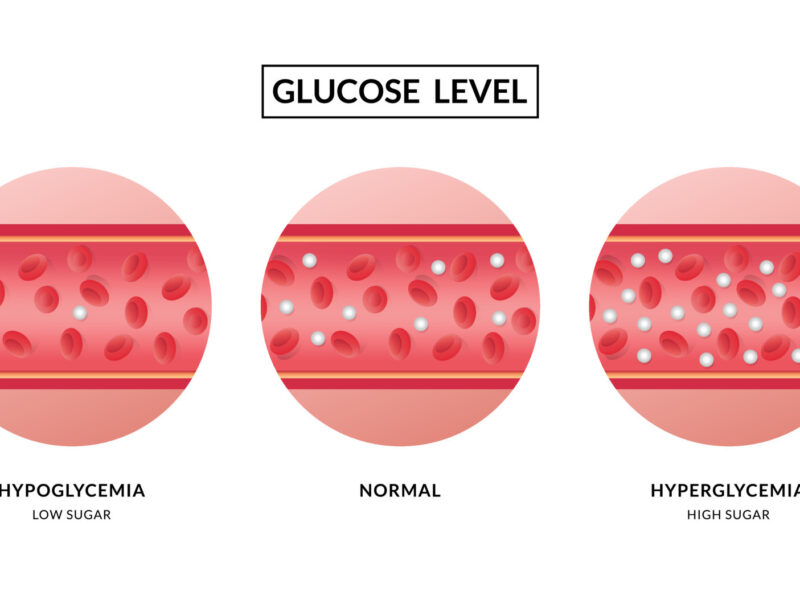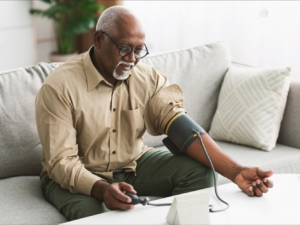Hypoglycemia, also known as low blood sugar, is a common and potentially serious condition characterized by a decrease in the level of glucose in the bloodstream. It primarily affects individuals with diabetes who take insulin or certain medications to manage their blood sugar levels.
However, hypoglycemia can also occur in people without diabetes due to various other factors. This essay explores the symptoms, treatment, and prevention strategies for hypoglycemia, emphasizing its significance in diabetes management and overall health.
Symptoms of Hypoglycemia
Hypoglycemia manifests with a range of symptoms that can vary in severity and onset. Common signs and symptoms include:

- Sweating: Excessive sweating, especially when it’s unrelated to physical activity or the environment, is a common early sign of hypoglycemia.
- Trembling or Shaking: Uncontrollable shaking or trembling, particularly in the hands or legs, is another common symptom.
- Palpitations: Rapid or irregular heartbeat, also known as palpitations, can occur during episodes of hypoglycemia.
- Hunger: Sudden hunger or cravings for sugary foods may arise as the body attempts to restore blood sugar levels.
- Weakness or Fatigue: Hypoglycemia can cause weakness, fatigue, or lethargy, making it difficult to perform routine tasks.
- Dizziness or Lightheadedness: Feeling dizzy or lightheaded, similar to the sensation experienced when standing up too quickly, may occur.
- Confusion or Difficulty Concentrating: Cognitive symptoms such as confusion, difficulty concentrating, or impaired thinking can develop as hypoglycemia progresses.
- Irritability or Mood Changes: Hypoglycemia can lead to irritability, mood swings, anxiety, or other emotional changes.
- Blurred Vision: Visual disturbances, such as blurred vision or double vision, may occur during episodes of low blood sugar.
- Severe Symptoms: In severe cases, hypoglycemia can cause seizures, loss of consciousness, or coma if left untreated.
Treatment of Hypoglycemia
Prompt treatment of hypoglycemia is essential to prevent complications and restore blood sugar levels to a safe range. The primary goal of treatment is to raise blood glucose levels quickly using fast-acting carbohydrates. Treatment options include:
- Glucose Tablets or Gels: Consuming glucose tablets or gels, which are readily absorbed into the bloodstream, is the preferred method of treating hypoglycemia.
- Fruit Juice or Regular Soda: Drinking fruit juice or regular soda can rapidly raise blood sugar levels due to their high sugar content.
- Hard Candy or Honey: Consuming hard candy or honey can provide a quick source of glucose to alleviate hypoglycemic symptoms.
- Glucose Gel: Applying glucose gel to the inside of the cheek or gums can facilitate rapid absorption of glucose into the bloodstream.
- Glucagon Injection: In severe cases of hypoglycemia where the individual is unconscious or unable to swallow, a glucagon injection may be administered by a caregiver or healthcare provider to raise blood sugar levels.
After administering treatment, it’s essential to monitor blood glucose levels closely and consume a snack or meal containing carbohydrates and protein to sustain blood sugar levels and prevent the recurrence of hypoglycemia.
Prevention of Hypoglycemia
Preventing hypoglycemia involves maintaining stable blood sugar levels through a combination of medication management, lifestyle modifications, and self-monitoring. Strategies for preventing hypoglycemia include:
- Regular Blood Glucose Monitoring: Monitoring blood sugar levels regularly, especially before meals, exercise, and bedtime, helps identify and prevent episodes of hypoglycemia.
- Balanced Diet: Consuming a well-balanced diet consisting of complex carbohydrates, lean protein, and healthy fats helps regulate blood sugar levels and minimize fluctuations.
- Medication Management: Taking diabetes medications, including insulin and oral hypoglycemic agents, as prescribed by healthcare providers and adjusting dosages as needed based on blood sugar levels and activity levels.
- Meal Planning: Consistent meal timing, portion control, and carbohydrate counting help maintain stable blood sugar levels and prevent hypoglycemia.
- Regular Exercise: Engaging in regular physical activity, such as brisk walking, cycling, or swimming, helps improve insulin sensitivity and regulate blood sugar levels. However, individuals should monitor blood sugar levels before and after exercise to prevent hypoglycemia.
- Avoiding Alcohol: Limiting or avoiding alcohol consumption, especially on an empty stomach or in combination with diabetes medications, reduces the risk of hypoglycemia.
- Carrying Emergency Supplies: Carrying fast-acting carbohydrates, such as glucose tablets or gels, and a glucagon emergency kit when away from home ensures prompt treatment of hypoglycemia if it occurs.
Conclusion
Hypoglycemia is a common and potentially dangerous condition that requires prompt recognition and treatment to prevent complications. Understanding the symptoms, treatment options, and prevention strategies for hypoglycemia is crucial for individuals with diabetes, their caregivers, and healthcare providers.
By maintaining stable blood sugar levels through medication management, lifestyle modifications, and regular monitoring, individuals can minimize the risk of hypoglycemia and achieve optimal diabetes management.
Additionally, raising awareness about hypoglycemia and educating individuals about its management and prevention is essential for improving outcomes and enhancing the quality of life for individuals with diabetes.










